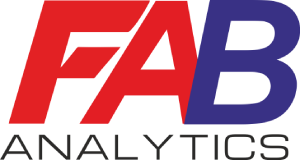
Investors sign term sheets in expectation that the numbers they see today will hold up under heavier scrutiny tomorrow. A rapid but disciplined check of the model often decides whether a deal team advances, renegotiates, or walks away. Choosing the wrong level of scrutiny can waste precious runway or, worse, create avoidable valuation bottlenecks.
In this blog, we have tried to discuss the differences between model review and audit, and best-case scenarios where they can be used.
What a Model Review Covers
A financial model review is a short-cycle engagement, typically three to five business days, focused on technical hygiene and commercial sense‐checks. Analysts run quality check software to identify potential errors, review calculations, and compare outputs with management’s narrative. Deliverables usually include:
- A summary of critical errors and “nice-to-fix” issues.
- An annotated copy of the workbook with flagged cells.
- A report highlighting the impact of the potential issue on the outputs.
What a Model Audit Covers
A formal audit follows accounting-firm standards for assurance. The team recreates calculations, ties numbers to source documents, and archives evidence for each material formula. The output is a signed report that can be appended to closing documentation, providing comfort equivalent to a limited-scope financial statement audit. Because the mandate is evidentiary, fees are higher and timelines stretch to two to four weeks, depending on the complexity of the model.
Investor Expectations by Stage
- Seed: Speed beats perfection. A partner may glance at a tab or two, but mainly wants evidence of market size logic and realistic burn.
- Series A/B: Growth investors expect a structured workbook that aligns to board reporting. A concise investor due diligence model can satisfy most questions if its mechanics are transparent.
- Growth/Pre-IPO: Exposure rises. Lenders and strategics look for defensible cohort metrics, bridge tables, and clear IFRS/GAAP alignment.
- PE Buyout: The bar is highest. A full audit is almost always required before signing the SPA, especially when leverage is involved.
Common Red Flags Found in Reviews
- Circular references hidden behind iterative calculation settings
- Hard-coded totals that overrule driver formulas
- Timing mismatches between revenue recognition and cash collection
- Linked files or external data sources that break when copied
- Volatile functions (e.g., OFFSET, INDIRECT) that slow the calculation time
Each of these signals undermines confidence long before the first site visit.
Choosing the Right Path: Cost, Time, Risk Matrix
- Cost: Reviews run one-quarter to one-third of an audit fee.
- Time: Reviews fit inside a week; audits rarely do.
- Risk: If debt covenants or earn-outs hinge on model outputs, the downside of an undiscovered error justifies the audit premium.
Use this simple rule: high leverage or regulated industries require assurance; all others can begin with a review and upgrade only if material issues surface.
Preparing Your Model
Adopting FAST modelling standards reduces review friction and future audit costs. Before you hit “send,” walk through this hygiene checklist:
- One calculation per row, one period per column
- No hard-coded numbers inside formulas
- Consistent sign convention (positive inflows, negative outflows)
- Distinct input, calculation, and output sheets
- No circular reference
- No Excel Errors
- Version control via clear file naming
When to Retrofit vs Rebuild
Retrofitting makes sense when:
- The model already mirrors board reporting granularity
- Model structure broadly aligns with FAST principles
- Integrity errors are confined to specific modules
Rebuilding is prudent when:
- Tabs have grown organically without a clear flow
- Incorporating any changes in the Model take long time
- Model calculation time has grown significantly due to inefficient modelling
- Multiple currencies, scenarios, and debt tranches are hard-wired
- Prior investors left unexplained macros or password protection
Decision Tree (yes/no):
- Updating the historical results in the model takes a few days to weeks?
- Can assumptions be updated without breaking the model integrity?
- Does the workbook (a simple financial model) take more than a couple of seconds to calculate?
If you answered “yes” twice, rebuild.
Takeaways & Next Steps
Differentiating model audit vs review is not semantics; it is capital strategy. Early-stage teams gain speed and insight from a review, while later-stage or highly leveraged deals earn credibility through a full audit.

